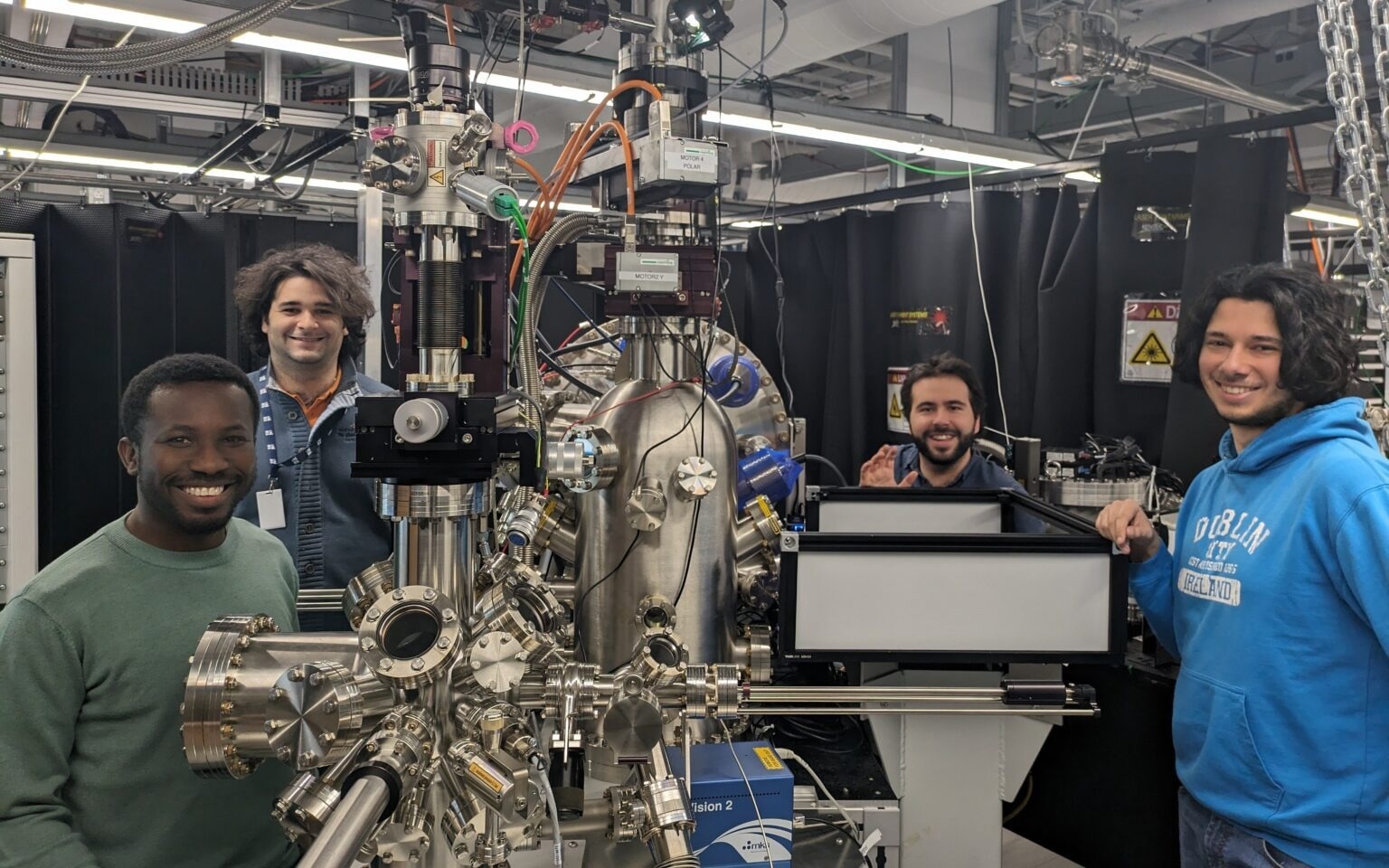Reviewed by Lexie CornerMar 13 2024
Research on quantum materials is leading to ground-breaking findings. It is expected to propel technological developments that will completely change the face of sectors such as mining, energy, transportation, and medical technology.
 Members of Professor Boschini’s group. First row (left to right): Benson Kwaku Frimpong (Doctoral Student) and Dario Armanno (Doctoral Student). Back row (left to right): Francesco Goto (Post Doctoral Student) and Nicolas Gauthier (ALLS Research Associate). Image Credit: Institut national de la recherche scientifique
Members of Professor Boschini’s group. First row (left to right): Benson Kwaku Frimpong (Doctoral Student) and Dario Armanno (Doctoral Student). Back row (left to right): Francesco Goto (Post Doctoral Student) and Nicolas Gauthier (ALLS Research Associate). Image Credit: Institut national de la recherche scientifique
Time- and Angle-Resolved PhotoEmission Spectroscopy (TR-ARPES) is a cutting-edge technique that enables scientists to investigate the dynamic and equilibrium characteristics of quantum materials through light-matter interaction.
A recent paper review by Professor Fabio Boschini from the Institut national de la recherche scientifique (INRS), along with colleagues Marta Zonno from Canadian Light Source (CLS) and Andrea Damascelli from UBC's Stewart Blusson Quantum Matter Institute (Blusson QMI), was published in the journal Reviews of Modern Physics.
This study shows how TR-ARPES has rapidly matured into a powerful technique over the last two decades.
TR-ARPES is an effective technique not only for fundamental studies but also for characterizing out-of-equilibrium properties of quantum materials for future applications.
Fabio Boschini, Professor, Institut national de la recherche scientifique
Professor Fabio Boschini also specialized in ultrafast spectroscopies of condensed matter at the Énergie Matériaux Télécommunications Research Centre.
A Revolutionary Tool for Quantum Materials Research
The new paper offers an extensive overview of TR-ARPES research and highlights its growing importance in studying phase transitions and light-induced electron dynamics in various quantum materials.
The scientific community is currently investigating new ‘tuning knobs’ to control the electronic, transport, and magnetic properties of quantum materials on demand. One of these ‘tuning knobs’ is the light-matter interaction, which promises to provide fine control the properties of quantum materials on ultrafast timescales. TR-ARPES is the ideal technique for this purpose since it provides direct insight into how light excitation modifies electronic states with time, energy, and momentum resolution.
Fabio Boschini, Professor, Institut national de la recherche scientifique
TR-ARPES has ushered in a new era of quantum materials research, allowing us to ‘knock on the system’ and observe how it responds and pushing the materials out of equilibrium to uncover their hidden properties.
Andrea Damascelli, Blusson QMI Scientific Director
Collaboration at the Heart of TR ARPES’ Success
TR-ARPES brings together research groups from condensed matter spectroscopy (ARPES) and ultrafast lasers (photonics). A large portion of the technique's success can be attributed to important developments in creating new laser sources that can produce light with precise properties.
Professor François Légaré, a Full Professor at INRS and an ultrafast laser science and technology expert, is collaborating closely with Boschini on the project. At the Advanced Laser Light Source (ALLS) laboratory, the groups led by Boschini and Légaré built and are operating a cutting-edge TR-ARPES endstation with exceptional, intense, long-wavelength excitation capabilities.
Thanks to the support from the Canada Foundation for Innovation (CFI), the governments of Québec (MEIE) and Canada, and LaserNetUS, as well as the recent CFI Major Science Initiatives program, we are now in the privileged position to open the TR-ARPES endstation at ALLS to national and international users.
Fabio Boschini, Professor, Institut national de la recherche scientifique
According to Professor Boschini, TR-ARPES is now a mature technique with a proven impact on various branches of physics and chemistry. He concluded, “Further experimental and theoretical developments, similar to what we are doing at ALLS, suggest that even more exciting times lie ahead.”
Journal Reference:
Boschini, F., et al. (2024) Time-resolved ARPES studies of quantum materials Reviews of Modern Physics. doi.org/10.1103/revmodphys.96.015003